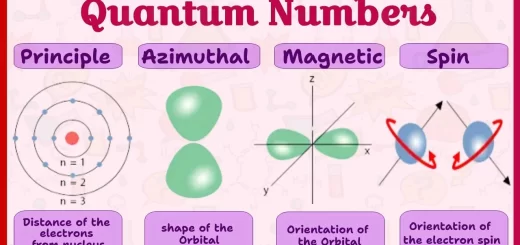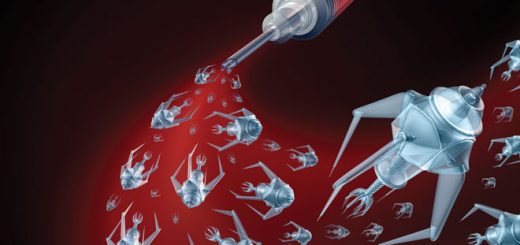Chemicals properties of alcohols, Economical importance of Ethanol, Ethylene Glycol & Glycerol
Alcohols react with active metals such as sodium (Na) as acids but they are not acids, Replaceable hydrogen is the hydrogen that is replaced by an active metal atom which is above hydrogen in the electrochemical series, Ethanol has acidic property and Ethanol has one replaceable hydrogen because ethanol has one OH group.
Chemical properties of alcohols
The chemical properties of alcohols may be classified as follows:
- Reactions specific to hydrogen of the hydroxyl group.
- Reactions specific to the hydroxyl group.
- Reactions specific to the carbinol group.
- Reactions specific to the whole molecule.
Reactions specific to hydrogen of the hydroxyl group
Reaction with sodium (Acidity of alcohols): Alcohols have a neutral effect on litmus, but a weak acidic character may appear especially when it reacts with strong active metals, Sodium or potassium which can replace the hydrogen of the hydroxyl group forming metal alkoxide and hydrogen evolves.
The alcohol has a weak acidic property, It is related to the presence of the polar covalent bond which combines the hydrogen atom to oxygen atom in the hydroxyl group, the electron pair is shifted towards the oxygen atom, which facilitates the breakdown of the polar covalent bond, so the metal atom can replace the hydrogen of the hydroxyl group.
2 C2H5OH(l) + 2Na(s) → 2 C2H5ONa(l) + H2 (g) ↑
Although the ethanol molecule has six hydrogens, It has one replaceable hydrogen because the ethanol molecule has one OH group, The formation of a white solid substance on evaporating the solution produced from the reaction of ethanol with sodium due to the formation of sodium ethoxide “white ppt”.
Practical experiment
Place 5 ml of ethanol in a test tube then add a small piece of sodium metal, cover the tube opening with your thumb to keep the evolving gas, Observe the effervescence and evolution of hydrogen gas which burns with a pop sound, After the reaction is completed evaporate the solution on water path and observe the formation of a white solid substance which is sodium ethoxide, the sodium ethoxide may be hydrolyzed giving ethanol and sodium hydroxide.
C2H5ONa(l) + H2O(l) → C2H5OH(aq) + NaOH (aq)
C2H5OH(aq) + NaOH (aq) → No reaction
Esterification
Ester Formation or Esterification (Reaction of alcohols with organic acids in the presence of conc. H2SO4): Alcohols react with organic acids to form esters, In this reaction, hydrogen atom is separated from the hydroxyl group of the alcohol molecule and the hydroxyl group is separated from the acid, this was proved by reacting the alcohol containing the heavy oxygen isotope O18, with acetic acid containing the normal oxygen isotope O18 by analyzing the oxygen of the formed water, it was found that it is of the normal isotope.
CH3COOH + C2H5OH → CH3COOC2H5 + H2O
Ester formation is a reversible reaction, so concentrated sulphuric acid H2SO4 should be added to prevent the reversible reaction and to absorb water, Esterification is the reaction between alcohols and acids in the presence of the dehydrating agent, water is formed from H from alcohol and OH from the acid.
Reactions specific to the hydroxyl group
Because alcohols contain a hydroxyl group, so they react with halogenated acid and conc.sulphuric acid, Ethanol reacts with conc. hydrochloric acid (HCl) in the presence of zinc chloride ZnCl2 as a catalyst (dehydrating agent) to form ethyl chloride, The reaction of HI with alcohol is faster than HBr and HCl, where HI is hydrolyzed easier due to iodine has the largest atomic radius.
C2H5OH (l) + HCl (aq) → C2H5Cl (aq) + H2O (l)
Reactions specific to the carbinol group
Alcohols are easily oxidized by an oxidizing agent such as acidified potassium dichromate or potassium permanganate, the products differ according to the type of alcohol, The action of the oxidizing agents is concerned with the hydrogen atoms attached to the carbinol that converts them to the hydroxyl groups.
We must put into consideration that when two hydroxyl groups are attached to the same carbon atom, the produced compound is unstable and instantaneously loses a water molecule and is converted to a stable compound.
Oxidation
Oxidation in organic chemistry means converting H, which is attached to carbinol, to OH, and it takes place by one of the following reagents “oxidizing agents”, KMnO4 acidified with conc. H2SO4, or K2Cr2O7 acidified with conc. H2SO4 .”Chromic acid”, Where atomic oxygen is produced from the reaction.
Oxidation of primary alcohols
The two hydrogen atoms attached to the carbinol are oxidized in two steps, In the first step, the aldehyde is produced, then the acid is produced in the second step, for instance, ethanol is oxidized by hot chromic acid to acetaldehyde then to ethanoic acid.
Primary alcohols are oxidized in two steps while secondary alcohols in one step because the carbinol group of the primary alcohol is attached to two hydrogen atoms while that of secondary alcohol is attached to only one hydrogen atom.
Practical experiment
Put three ml of ethanol in a dry clean test tube, Add the same amount of acidified potassium dichromate KMnO4 “violet” + conc. H2SO4, Heat the mixture in a water bath for 10 minutes then cool it, we observe that the colour of the solution changed from orange to green colour, The odour of vinegar (ethanoic acid) appears due to the formation of acetic acid.
If we use acidified potassium permanganate as an oxidizing agent, we notice the disappearance of its violet colour due to the oxidation of alcohol into acetaldehyde (odour of green apples), this reaction is used to detect the taking of drivers for liquors.
When the driver blows a balloon through a tube containing silica gel saturated with acidified potassium dichromate, The balloon is left till the exhalation goes out, If the driver is a drinker, The colour of the potassium dichromate in the tube changes from orange to green colour.
CH3CH2OH +[O] → [CH3CH2OOH] → CH3CHOOH → CH3COOH
Oxidation of primary alcohol is not the ideal method to prepare aldehydes because the aldehyde formed will be oxidized into carboxylic acid, It is not preferred to prepare aldehydes by oxidation of primary alcohols because the reaction does not stop by the formation of the aldehyde but continues forming the organic acid.
Oxidation of secondary alcohols
The single hydrogen atom attached to the carbinol group is oxidized in one step by the previous method, where ketone is formed, and isopropanol is oxidized to acetone (propanone).
Oxidation of tertiary alcohols
Tertiary alcohols are very difficult to be oxidized because the carbinol group in tertiary alcohol is not attached to any hydrogen atoms, The violet colour of the acidified potassium permanganate disappears when it is added to 2-propanol and does not disappear when it is added to 2-methyl-2-propanol because 2-propanol is secondary alcohol and can be oxidized while 2-methyl-2-propanol is tertiary alcohol and can’t be oxidized.
Reactions specific to the whole molecule
Dehydration means the elimination of H2O by using conc. H2SO4, Alcohols react with concentrated sulphuric acid and the reaction products depend on the number of alcohol molecules as well as the temperature used, when they are heated to 180°C, The water molecule is eliminated from one alcohol molecule to give an alkene.
CH3CH2OH (l) → C2H4 (g)+ H2O (l)
All monohydric alcohols (primary- secondary- tertiary) form ethers, If the temperature is 140°C, the conc. sulpheric acid eliminate one molecule of water from every two molecules of the alcohol giving ether.
2C2H5OH (l) → C4H10O (g) + H2O(l)
The reaction products of ethanol with sulphuric acid depend on the temperature because at 140°C, the water molecule is removed from two molecules of alcohol forming the corresponding ether while at 180°C, the water molecule is removed from one molecule of the alcohol to form the corresponding alkene.
Economical importance of Ethanol
- It is used as solvents for organic compounds as oils and fats, It is used in chemical industries such as the preparation of drugs, paints and polishes.
- Ethanol is used in sterilizing mouth and teeth, It is used as a disinfectant which has a great effect on microbes.
- Ethanol is used in the manufacture of perfumes and alcoholic liquors, we must put into consideration the bad effect of alcoholic drinks on man’s health and social aspects, like liver fibrosis and cancer of stomach and esophagus.
- It may be mixed with gasoline which is used as a fuel, In some countries, such as Brazil.
- It is the main component of converted alcohol (85% ethanol + 5% methanol + 1% another additives + odour, colour and the rest is water).
- Ethanol freezes at (−110°C), so it is used to fill special thermometers which measure the lower temperature until (−50°C) as it has a low freezing point (−110.5°C).
Properties of Ethylene Glycol
Ethylene Glycol is a dihydric alcohol, It is used as a liquid of high viscosity and sweat taste, It is miscible in water, It has high boiling point 197°C which is greater by 2.5 times than that of ethanol, The boiling point of ethylene Glycol is higher than that of ethanol due to the presence of two hydroxyl groups in the molecule.
Uses of Ethylene Glycol
- It is used as an antifreeze substance in car radiators in cold countries.
- Due to its high viscosity, it is used as a constituent of the liquids used in the hydraulic brake, in addition, it is used in printing ink.
- It is used to prepare polyethylene glycol (PEG) that is used in the manufacture of Dacron fibers, photographic films and cassette tapes.
Ethanol does not use as an antifreeze substance in car radiators because it contains one hydroxyl group, so the result solution from its addition to water has freezing point not less so much than the freezing point of water.
Properties of Glycerol
Glycerol is a trihydric alcohol, It can be considered as a derivative of propane by replacing three H with three OH groups, Glycerol is completely miscible with water due to the presence of three OH groups, Glycerol is a transparent, viscous, and sweet taste liquid.
Uses of Glycerol
- It is used in the manufacture of creams and cosmetics as a skin moisturizer.
- It is used in the manufacture of textiles, as it renders them soft and flexible.
- It is used in the preparation of explosive substance (Trinitroglycerine), It is obtained by nitration of glycerin by a mixture of concentrated, nitric acid and sulphuric acids, The role of H2SO4 is to absorb water and prevent the reversible reaction.
- Trinitroglycerine is also used to widen arteries in the treatment of heart problems.
Glycerol is used in the preparation of explosives because it reacts with a mixture of concentrated nitric acid and sulphuric acids forming trinitroglycerine which gives an enormous amount of heat and gases on being burnt.
Aliphatic polyhydric alcohols
Carbohydrates are considered polyhydroxy aldehydic or ketonic substances, their molecules contain more than one hydroxyl group in addition to the aldehydic or ketonic group for example glucose or fructose C6H12O6, Sorbitol is a polyhydric alcohol or polyhydroxy alcohol.
Physical properties of Alcohols and How you detect the taking of drivers for liquors (alcohol)
Phenols importance, preparation, physical and chemical properties



